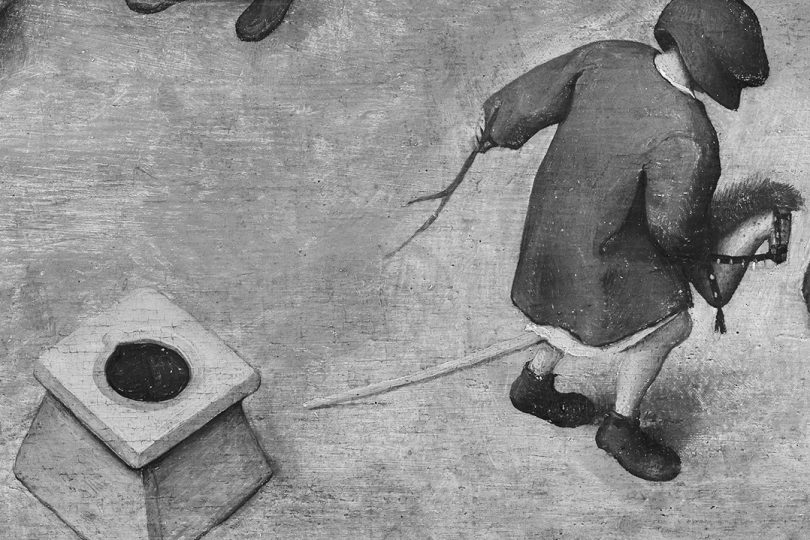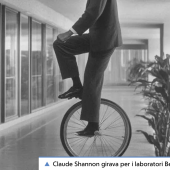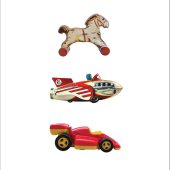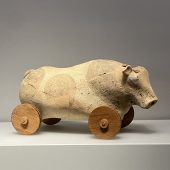excerpt from draft of Toy Theory: technology and imagination in play (out 5th November):
The toy […] offers alternative ways of grasping the play of knowledge, deceit and illusion. The child knows the toy is not an actual animal, but in the moment of play it is more than enough that it functions as-if it were an animal. It is not not an animal. Or, to take another not-animal, the hobby horse, as Gombrich describes it, is a substitute, but – crucially – not a substitute for anything existing. In this always-already simulacral register, like the kitten with a ball that becomes the mouse, the stick becomes the horse. Observation or experience of actual horse-riding may provide a thematic or dramatic frame or prompt for hobby horse play, but the play itself is not constrained by it. From the primitive as-if gambit of the kitten and the hobby horse rider can be seen the construction or genealogy of a diffuse range of related ludic, imaginative and epistemological attitudes. From Hero’s fountains via stage magic to the CGI special effects of 1990s blockbuster films or virtual reality applications, the dynamic is the interplay of knowledge and belief: we know we are seeing an illusion, we know the seductive visible surface hides inner mechanisms, and we take pleasure in both being nearly-tricked and in the spectacle and ingenuity of this deceit and its fabrication. The Chess Player epitomises this dynamic: audiences knew it was a trick but were enthralled by its ingenuity and returned again and again to try to figure out how it was achieved. Where the Chess Player differs from other sideshow trickery and stage magic, I would suggest however, is in its marshalling of a prevailing technological imaginary. As with spectacular developments in AI today, the attraction of the Chess Player and its automata forebears lies as well in their invitations to imaginative extrapolation. This device doesn’t think, but it seems less unthinking than anything seen before, and… what if it could think?
This overarching toyetic imaginative regime then resists the fundamental binary oppositions of recent cultural theory, of nature and culture, and of knowledge and belief/fetishism, but it does not simply valorise or inscribe either instinct or magical thinking in post-Enlightenment rationality. As its presence in the play of animals demonstrates, it precedes and transcends both magical thinking and the rational and realist. The toy hints at a mode of relationality between artefact and source (and the mobilisation of each) in which their separation is collapsed. Like the transpositions of religious ritual but everyday and without superstition—preternatural not supernatural.




